I have had the ASRock Z97 Extreme 6 + Intel Core i7 4790K combination in my workstation for a time and only briefly tried running ESXi 5.5 while testing some network and RAID drivers. Previously I have had great use for VT-d in my server, but since this combo was for my workstation I chose a CPU only based on performance. Now, many months later, I stumbled on the fact that this very CPU supports VT-d, in contrast to previous ‘K’ model CPU. Since VT-d is not widely used, I couldn’t find anyone else that has tested the VT-d support on this hardware, which is why I decided to find out if it does.
System specification
- Motherboard: ASRock Z97 Extreme 6, bios 1.60
- Processor: Intel Core i7 4790K
- Memory; Kingston 16GB
- Storage: Intel 530 SSD 120GB
- Storage controller: IBM ServeRAID M1015 / LSI SAS 9211-8i, top most PCI-E slot
- ESXi 5.5u2
BIOS Setup of the ASRock Z97 Extreme 6
The settings for VT-x and VT-d are hidden under different menus in the UEFI BIOS. VT-x is found under CPU configuration as “Intel Virtualization Technology” and VT-d under Chipset configuration with the same name. VT-x was enabled by default but VT-d was disabled. Here is also a note showing VT-d support or not. As we can see in the image below, VT-d is supported with this CPU and motherboard. 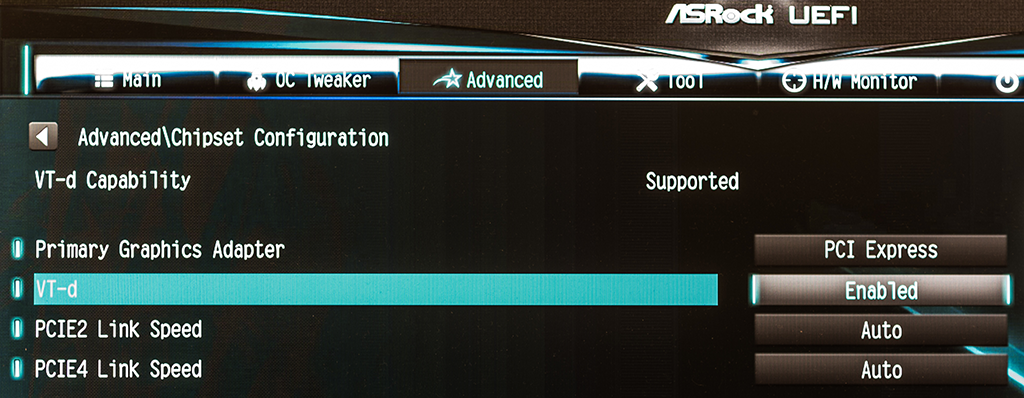
ESXi Installation
To get support for both of the onboard NICs, please see my other post regarding driver inclusion to an ESXi ISO.
I usually install ESXi on a USB thumbdrive to separate the ESXi installation from the datastore. This is made even more easy on some of ASRock’s motherboards since they have an onboard USB header. For this simple test, I decided to use a single SSD connected to the onboard SATA controller.
Once ESXi is installed the passthrough settings can be found under Configuration – Advanced Settings. For this test I chose to pass through the following devices:
- Onboard Realtek NIC
- Onboard ASMedia USB3 controller
- LSI 9211-8i SAS HBA
VT-d verification
I began with just launching a VM with an Ubuntu 14.04 live ISO. As we can see with lspci, all devices were found correctly:
I connected an external 500GB disk to the USB controller and a 3TB disk and they were both found. I actually had a USB mouse connected to the USB controller by chance, and it worked as well 🙂
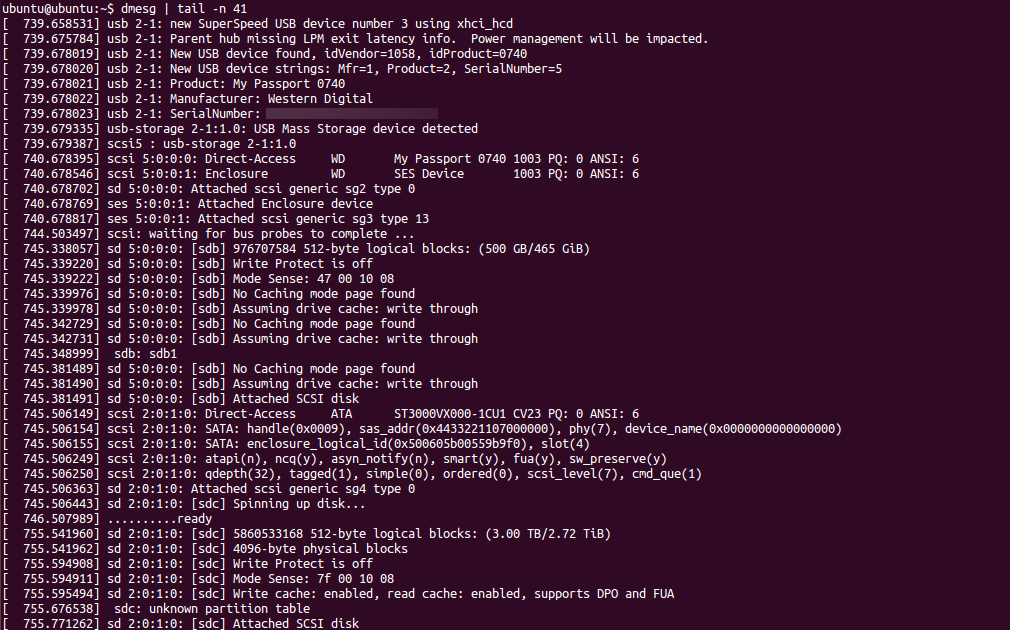
Moving on to Windows and installing Windows 7 x64 SP1. After some driver installation all was working fine: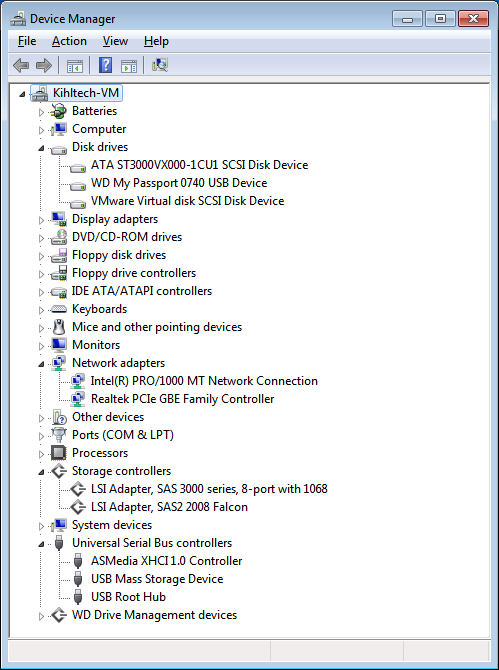
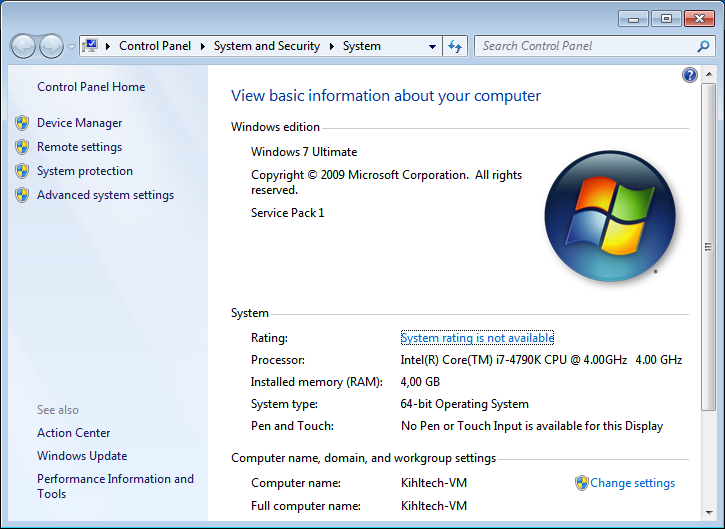
Final words
Everything was working really well with this combination and it is a welcomed surprise to see Intel enable VT-d for the Devil’s Canyon CPUs. Only the Core i7-4790K was tested at this point but it should be pretty safe to assume that the Core i5-4690K will work as well.

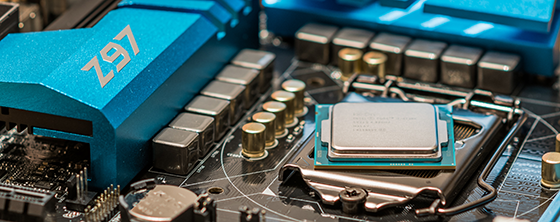
Very nice homepage,, superglad i found this site..
on the verge of building my first home ESXi server .
Aiming for some virtual server, tho still being able to use it as a HTPC with KVM extenders and nice GPU output, this site will be re-visited..! =)
Did you end up getting the GPU passthrough working? Which GPU would be a good fit?
According to the BIOS at least, VT-D working well on Core i5-4690K with your same motherboard. ASRock Z97 Extreme 6 FTW
Hi there, I’m planning on doing the same type of setup as you. Were you able to overclock this system with VT-D enabled?
I’m aiming for the same setup
But I’m a bit confused here.
The Intel site says the Z97 chipset has no vt-d support, only the Q87
Z97
http://ark.intel.com/products/82012
Q87
http://ark.intel.com/products/75007
Also the Asrock site mobo specs does not mention vt-d/x support, but in the BIOS there is :s
Found this, its seems aiming for a Q chipset is safe
”
Another interesing update. I sent a mail to Supermicro support a week or so ago, and they finally responded:
Quote:
Subject: Intel VT-d support on LGA 1150 Motherboards
I have been interesed in purchasing a LGA 1150 Motherboard for a Haswell build, possibily with a Xeon E3-1245 V3. One of the requisites is that it supports VT-d, so I can use the IOMMU feature to do VGA passthrough with the Xen Hypervisor. There are many consumer Desktops Motherboards from other brands that usually does NOT support VT-d due to the lack of a proper ACPI DMAR table in the BIOS, rendering the feature useless even through there seems to be Hardware support. This is the reason why I started to pay attention to Server oriented Motherboards like yours.
I started to look Supermicro X10SAT Motherboard, that claims in the manual VT-d support. However, one of the reasons why I don’t find Server Motherboards convincing is that while I believe they would do the job properly, I will miss all the BIOS arsenal of options to run it out-of-spec (Overclocking/underclocking, overvolting/undervolting the Processor, RAM Timmings, etc), that are very rare to see on a Server Motherboard. There is also another Motherboard similar to the X10SAT, the C7Z87-OCE, which seems to have all those options that I want to have, and also claims VT-d support in the manual, so it seems like a better choice.
However, Intel Ark site says that the Z87 Chipset does not support VT-d, while C226 Chipset does:
http://ark.intel.com/compare/75013,75522
Can Supermicro confirm if VT-d works on the C7Z87-OCE and if that Chipset info is wrong on Intel part?
Besides, accoding to photos, the X10SAT and C7Z87-OCE seems to be based on the same PCB, so they should be very similar. Are there any more feature that doesn’t prominently appear on the specifications page that I’m missing by going to one choice against the other, like the BIOS options?
Their response:
Quote:
Since Z87 chipset does not support VT-d, onboard LAN will not support it either because it is connected to PCH PCIe port. One workaround is to use a VT-d enabled PCIe device and plug it into CPU based PCIe-port on board. Along with a VT-d enabled CPU the above workaround should work per Intel. As for X10SAT, although it shares the same PCB as C7Z87-OCE, will not have overclocking options enabled in the BIOS since that was not what it is designed for.
Basically, what I understand now is that you can get VT-d working on any Chipset, just that you will only be able to virtualize the PCIe slots connected to the Processor and not the ones from the Chipset. This is getting interesing.”
Ended up with this:
Xeon® E3-1271 v3, 3,6 GHz (4,0 GHz Turbo Boost)
AsRock C226M WS (microATX)
– Intel C226 Chipset
– Socket 1150
– x2 LAN
– ECC
– VT-D
– V-Pro
Any word on z170 6700k working mobo?